Windows installed St Bartholomew’s Church
2021
In late 2020, Sattler’s Stained Glass Studio of West LaHave and artist Sue Obata were again commissioned to make 6 new stained-glass windows for the church. The beautiful glass used was hand-made by skilled glass blowing artisans in Germany where this ancient traditional work continues to this day.
Memories of those who lived and worked by the LaHave River is the theme of these new stained-glass windows.
St Bartholomew’s Church from LaHave River side

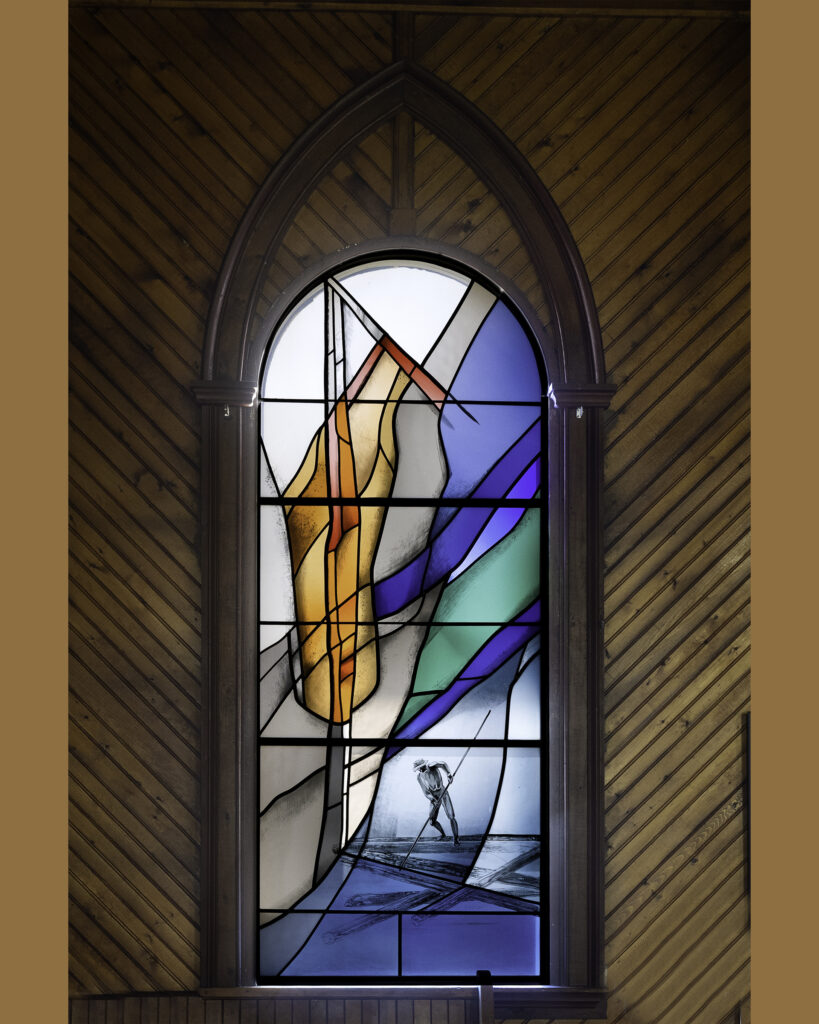
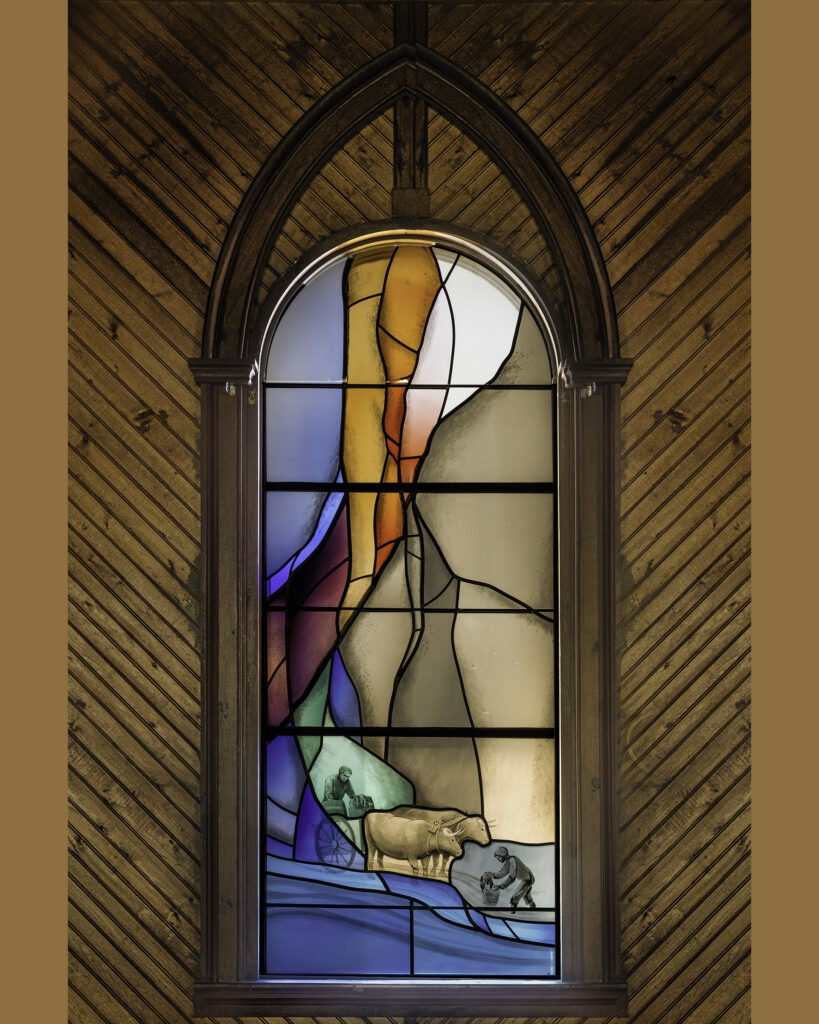
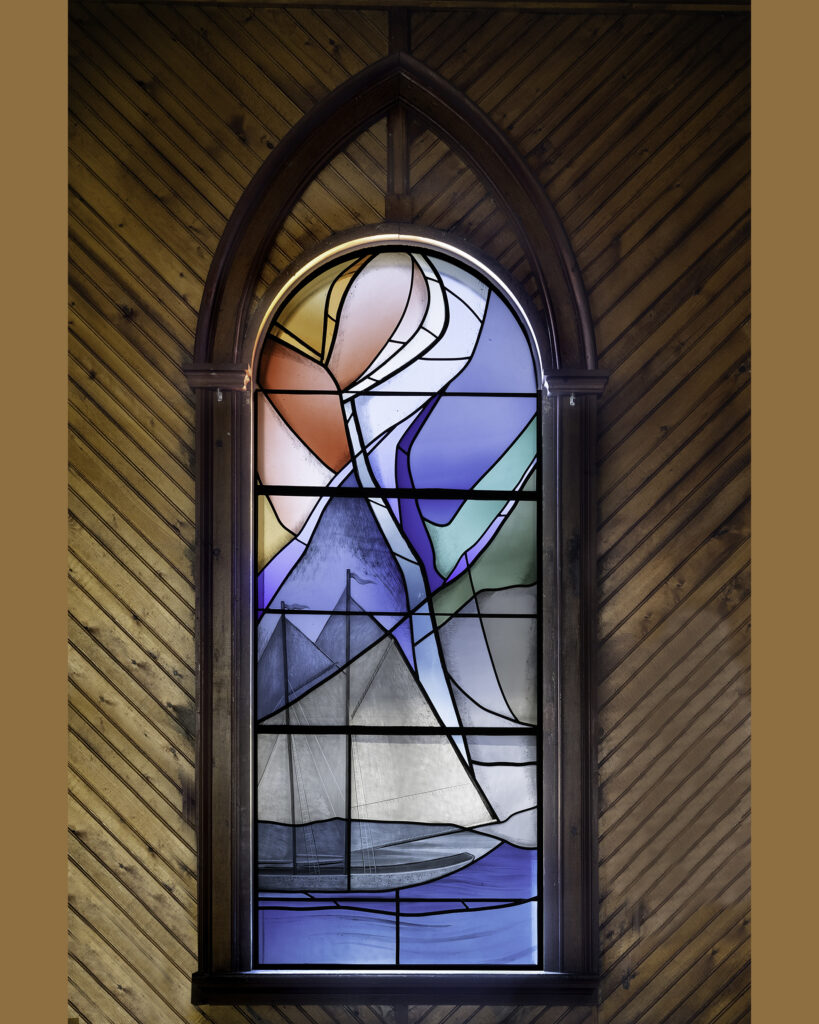
River Side Windows from Interior of Church
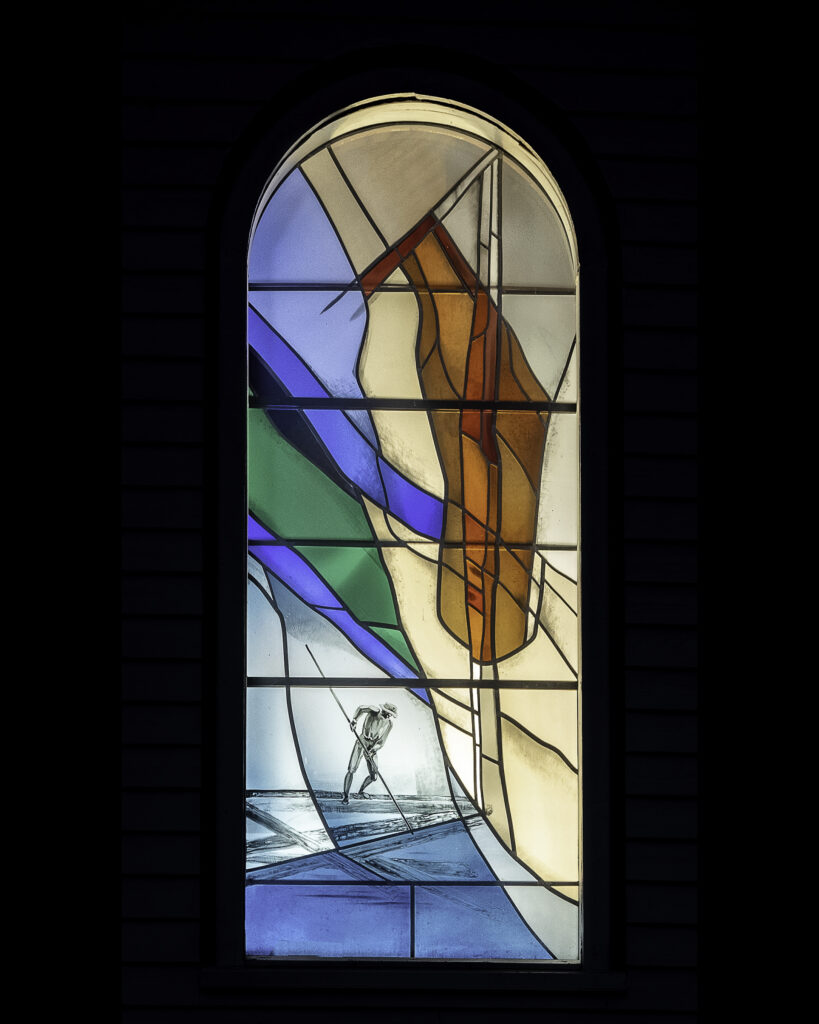
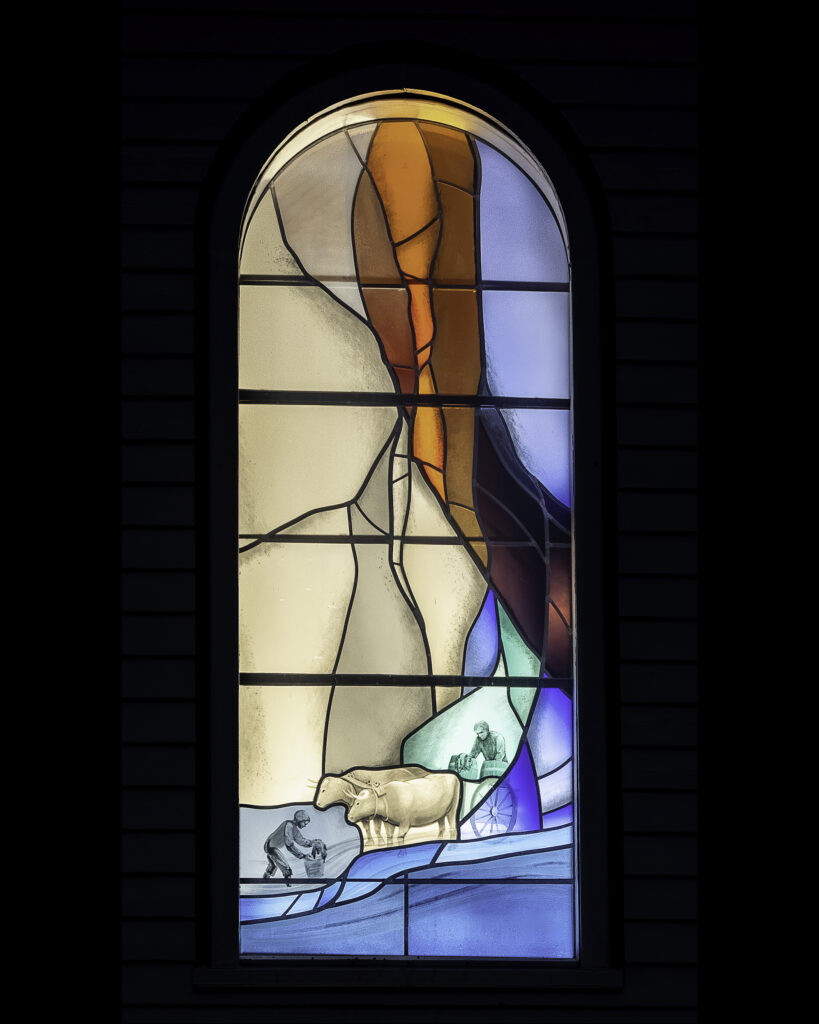
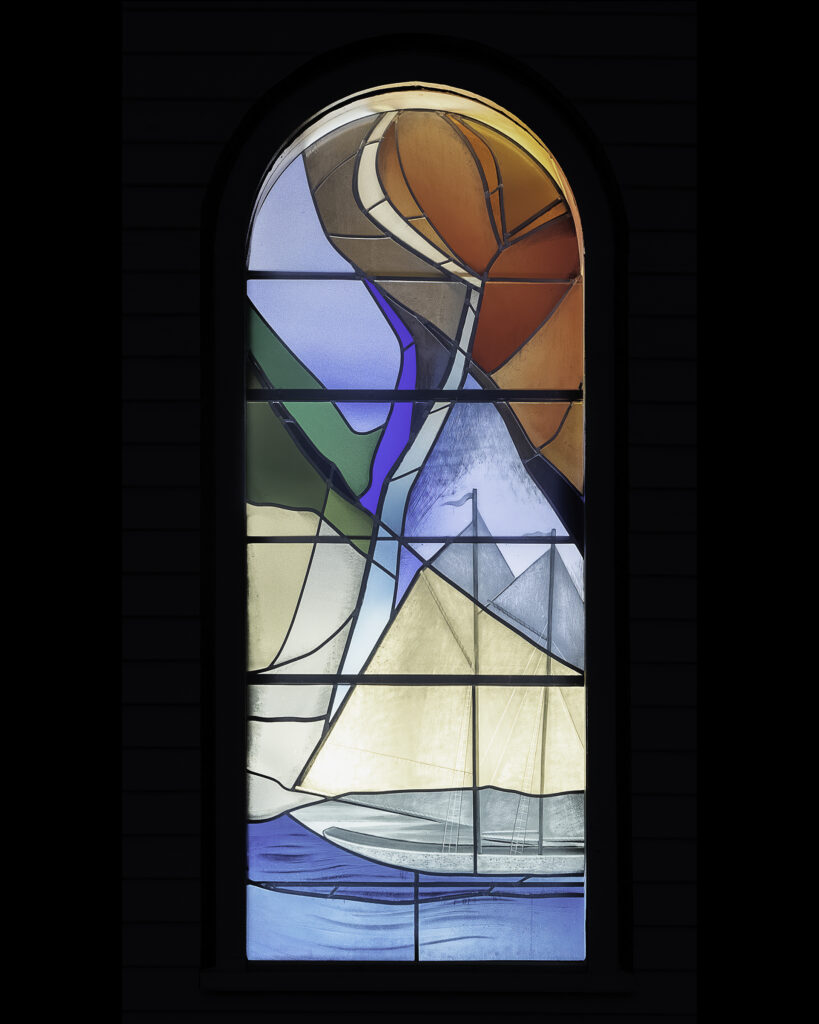
River Side Windows from Exterior of Church
Logging, a reference to local agriculture, and fishing are celebrated in contemporary designs showing a log driver, collecting seaweed for farming and a fishing schooner – all reflecting the lives of early settlers in this area.
Since God put Adam to work in the garden of Eden, “honest” work has been valued as foundational in one’s life journey/path. God’s Word implies that there is dignity in all types of work. It does not elevate one honest profession above another.
“For thou shalt eat the labour of thine hands: happy shalt thou be, and it shall be well with thee”. Psalm 125:2
“You will eat the fruit of your labour; blessings and prosperity will be yours.” Psalm 125:2
“And whatsoever ye do, do it heartily”. Colossians 3:23
At the top of the left and right windows are the first and last letters of the Greek alphabet, the Alpha and Omega. Blending into the background those letters suggest the presence of God in our life journeys, who said, “I am the beginning and end”.
St Bartholomew’s Church from Forest Side towards LaHave River
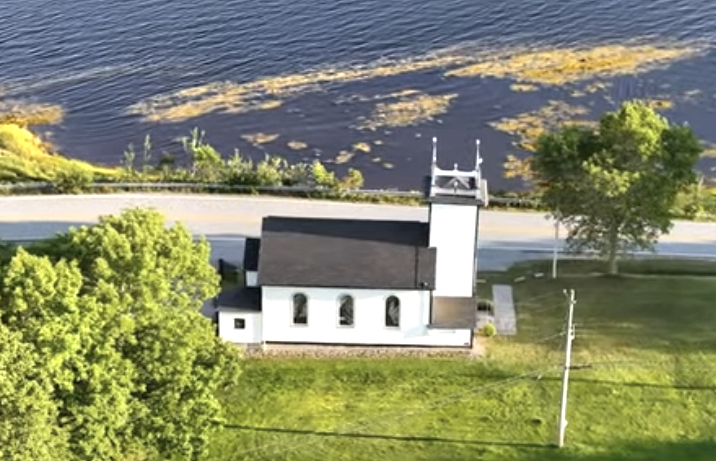
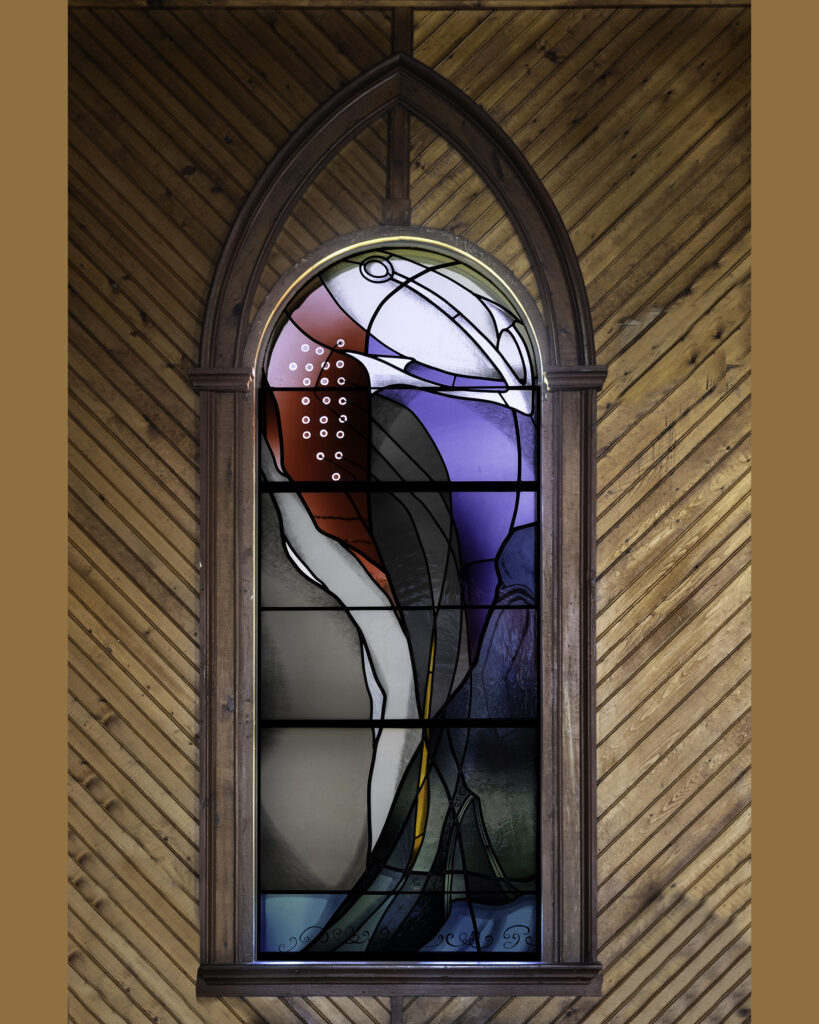
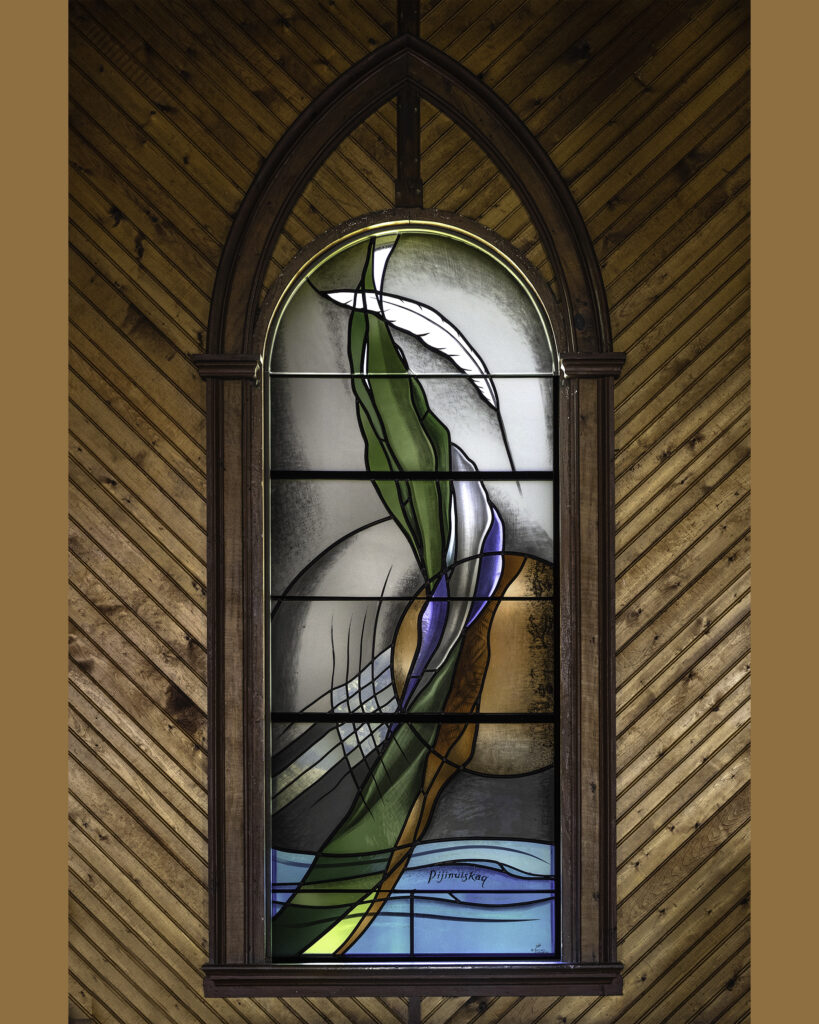
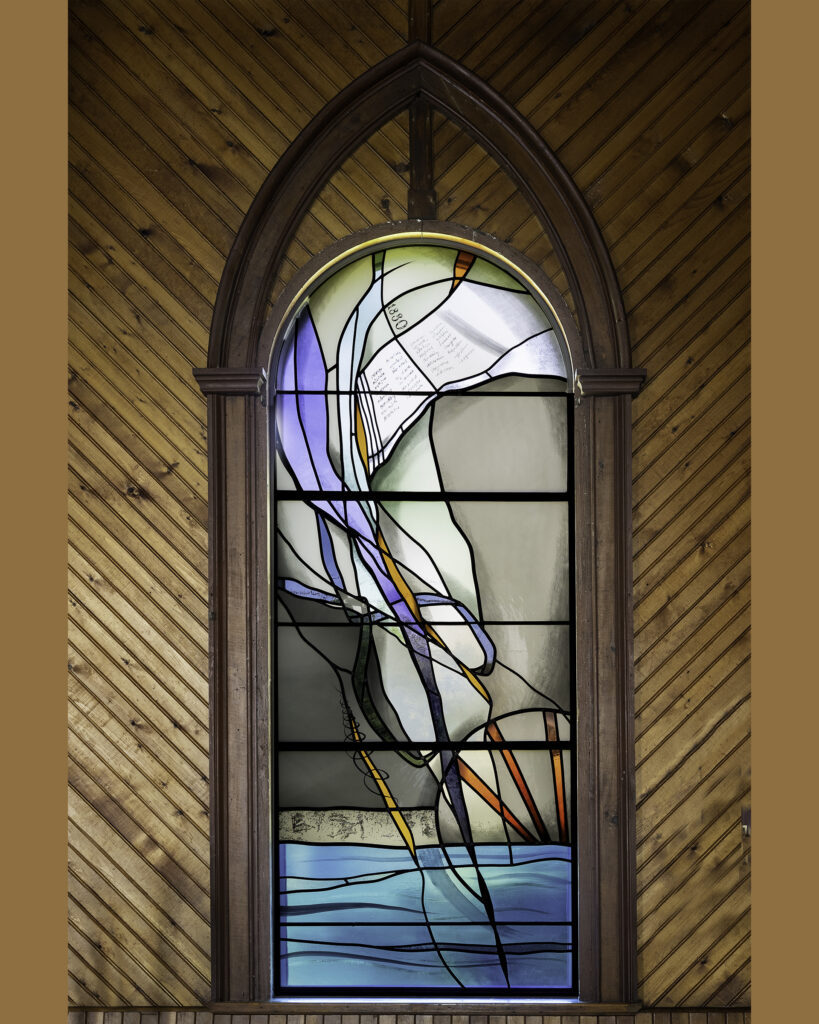
Forest Side Windows from Interior of Church
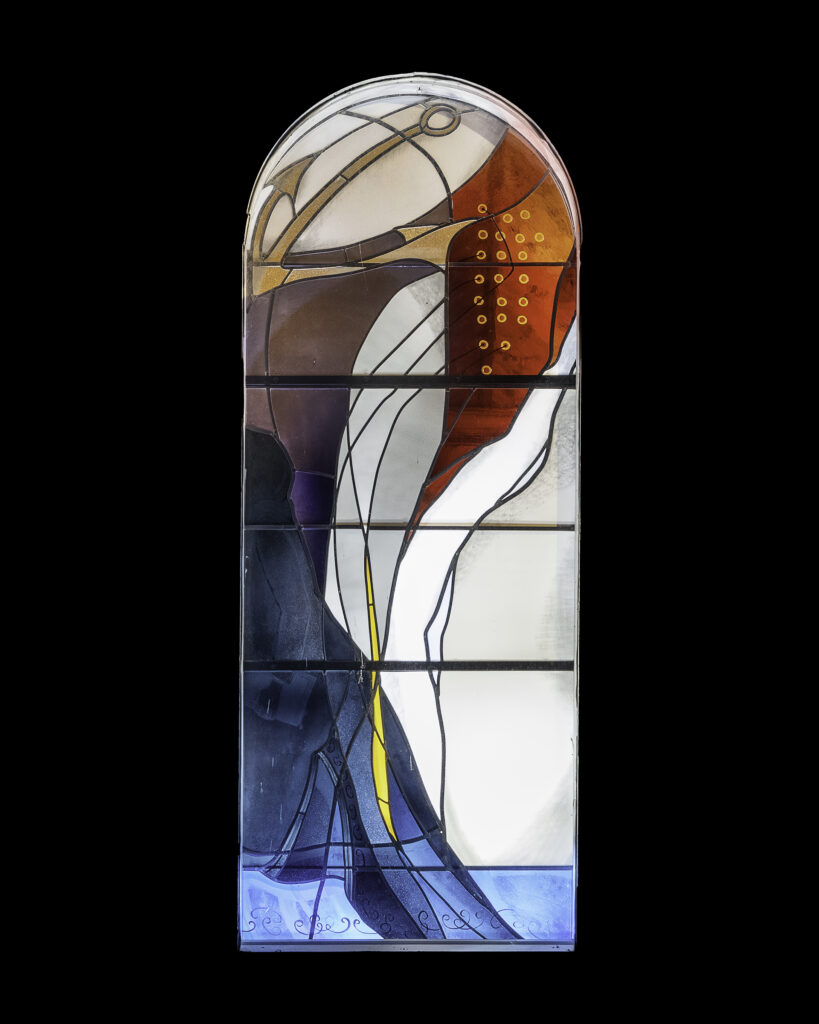
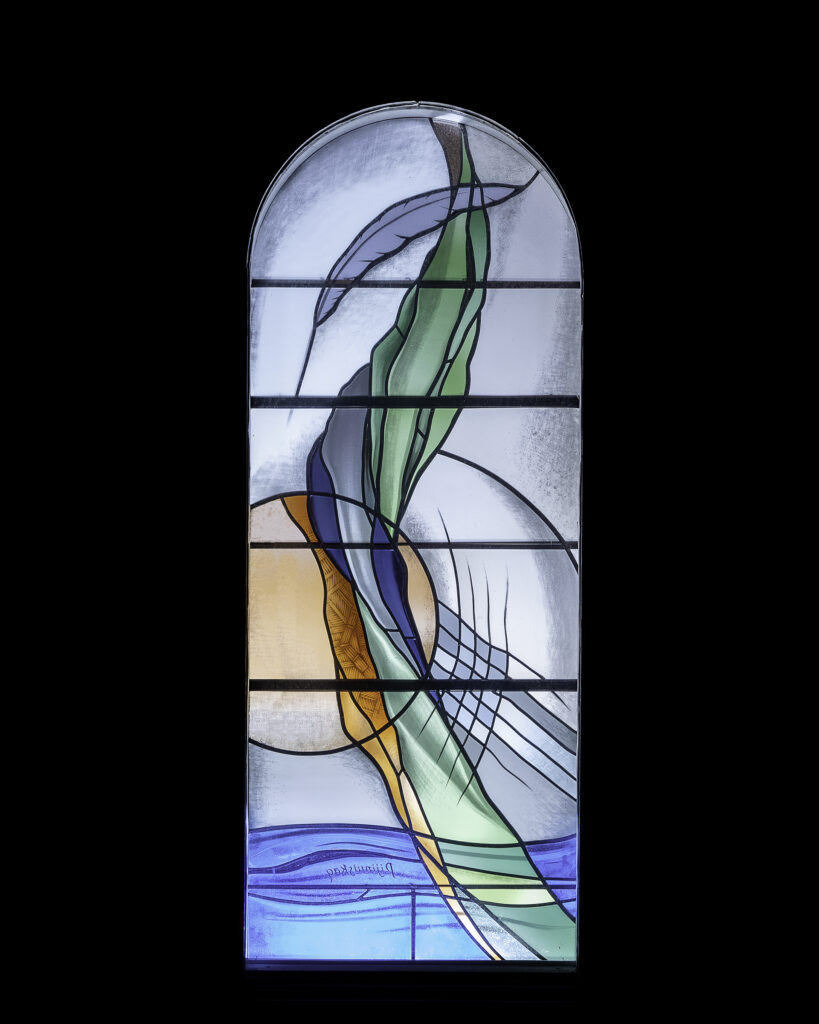
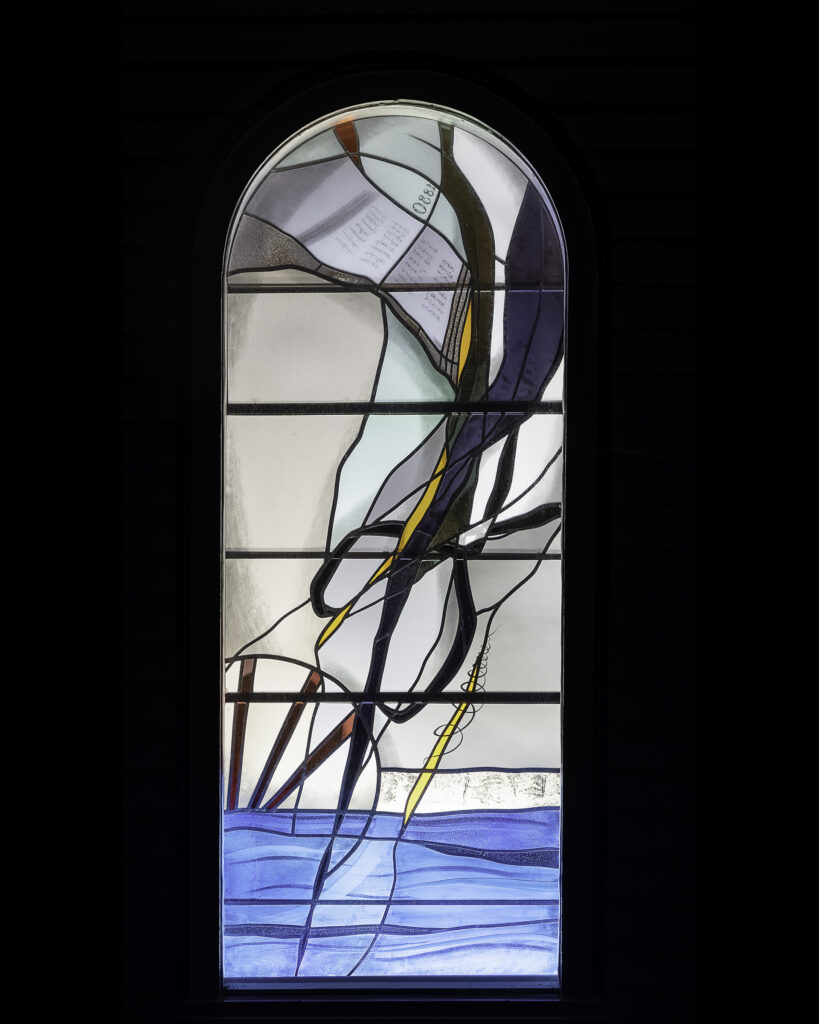
Forest Side Windows from Exterior of Church
Left Window – Women of the Area
Women have always worked hard around the home, but this window is a celebration of their work outside the home. In the red section, there are holes with long lines attached that refers to the early work that many women did as telephone operators in Bridgewater and elsewhere.
In the area of medicine, the personality of Dr. Victoria Sarah Ernst (1856-1940) loomed large. She trained as a doctor but as a female was unable to intern in the hospital, so she set up her own practice becoming the first to do so in Bridgewater. It is written that she was a familiar figure around town (accumulating 40 properties there) usually dressed in black – she is represented as the shadowy figure in left side of the window, holding a book to signify knowledge and learning. The book then is also a reference to the work of teachers who were usually women at that time.
At the bottom of the window is the traditionally shaped Mi’kmaq hat – a general acknowledgement of their work and the contributions they made to their families and community. At the very top of the window is an anchor – a traditional Christian symbol of Hope, and, more literally, it relates to the river and the ocean.
Centre Window – Mi’kmaq Culture
The Mi’kmaq legacy of hand work is well known. The quill and basketry work are on display in Bridgewater’s DesBrisay Museum and is well documented. This is reflected in the line work in the circle area of the window. Birch bark imagery is also used here because it permeated so much of Mi’kmaq work – in canoes, wigwams and craft work.
In the water, a pattern motif associated with Mi’kmaq design is used along with the word “Pjnuijuak” the name the Mi’kmaq used for the LaHave River. It means “having long joints”.
At the top of this window is a fish – a very old symbol that was used for Christians and also relates to the traditional source of sustenance for the local population. The circle in the window and overall organic style symbolizes their holistic view of life and their strong connection to, and respect for, nature.
Sometimes one must “Stand still and consider the wonderous works of God”. Job 37:14
Right Window – Local Artifacts
This window celebrates the history of the many families in this area through artifacts. Family heirlooms such as the ice tongs and the spinning wheel are good examples of this and reflect work once connected with daily living. The Bible at the top is a familiar Christian symbol but also symbolizes an old 1880 Bible that is part of the Ritcey Family whose descendants were the first permanent European settlers to Riverport.
The birch bark and nails reference the birch bark that was used as flashing in the original construction of the church. This was discovered when renovations were in progress on the windows.
Photography by Peter Zwicker of Bacalao Photo, Lunenburg NS.